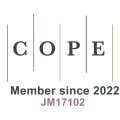REFERENCES
1. UN OHRLLS. About SIDS. Available from: https://www.un.org/ohrlls/content/about-small-island-developing-states [Last accessed on 18 Mar 2022].
2. Power M. Rethinking development geographies. 1st ed. London: Routledge; 2003.
3. Wisner B. Vulnerability as concept, model, metric, and tool. Oxford Research Encyclopedia of Natural Hazard Science. Oxford University Press; 2016.
5. Intergovernmental Panel on Climate Change (IPCC). Regional factsheet: small developing islands. SIXTH ASSESSMENT REPORT working group I - The physical science basis. Available from: https://www.ipcc.ch/report/ar6/wg1/downloads/factsheets/IPCC_AR6_WGI_Regional_Fact_Sheet_Small_Islands.pdf [Last accessed on 17 Mar 2022].
6. Thompson DD. Disaster risk governance: four cases from developing countries.1st ed. New York: Routledge; 2020.
7. Connelly S. Mapping sustainable development as a contested concept. Local Environment 2007;12:259-78.
8. Hewitt K. Place annihilation: area bombing and the fate of urban places. Annals of the Association of American Geographers 2010;73:257-84.
9. Wisner B, Blaikie P, Cannon T, Davis, I. At risk: natural hazards, people’s vulnerability and disasters. London: Routledge; 2004.
10. Wisner B, Gaillard J, Kelman I. Framing disaster handbook of hazards and disaster risk reduction. London: Routledge; 2014.
11. Weichselgartner J, Kelman I. Geographies of resilience: Challenges and opportunities of a descriptive concept. Progress in Human Geography 2015;39:249-67.
12. Brown K, Westaway E. Agency, capacity, and resilience to environmental change: lessons from human development, well-being, and disasters. Annu Rev Environ Resour 2011;36:321-42.
13. Lukka K, Vinnari E. Domain theory and method theory in management accounting research. Accounting, Auditing & Accountability Journal 2014;27:1308-38.
14. Kelman I, West JJ. Climate change and SIDS: a critical review. Ecological and environmental anthropology 2009;5:1-6. Available from:
15. UNFCCC. Climate change, small island developing States. Available from: https://unfccc.int/resource/docs/publications/cc_sids.pdf [Last accessed on18 Mar 2022].
16. Fialho, Djalita, Namsuk Kim. “Towards a resilience-building framework for monitoring countries graduating and graduated from the Least Developed Country category.” UN Department of Economic & Social Affairs. Available from: https://www.un.org/development/desa/dpad/wp-content/uploads/sites/45/publication/CDP-bp-2021-51.pdf [Last accessed on18 Mar 2022].
17. UN Framework Convention on Climate Change. Available from: https://digitallibrary.un.org/record/478154?ln=en [Last accessed on18 Mar 2022].
18. UNISDR. 2009 UNISDR Terminology on Disaster Risk Reduction. Available from: http://www.unisdr.org/we/inform/terminology [Last accessed on18 Mar 2022].
19. Alexander DE. Resilience and disaster risk reduction: an etymological journey. Nat Hazards Earth Syst Sci 2013;13:2707-16.
20. Cutter SL, Barnes L, Berry M, et al. A place-based model for understanding community resilience to natural disasters. Global Environmental Change 2008;18:598-606.
21. Davoudi S, Shaw K, Haider LJ, et al. Resilience: a bridging concept or a dead end? Planning Theory & Practice 2012;13:299-333.
22. Xue X, Wang L, Yang RJ. Exploring the science of resilience: critical review and bibliometric analysis. Nat Hazards 2018;90:477-510.
23. Duval, Romain, Jørgen Elmeskov, and Lukas Vogel. Structural policies and economic resilience to shocks. Available from: https://papers.ssrn.com/sol3/papers.cfm?abstract_id=1002508 [Last accessed on18 Mar 2022].
24. Hallegatte S. Economic resilience definition and measurement. Policy research working paper 6852. Available from: https://openknowledge.worldbank.org/bitstream/handle/10986/18341/WPS6852.pdf?sequence=1&isAllowed=y [Last accessed on 17 Mar 2022].
25. Gaillard JC, Jigyasu R. Measurement, and evidence: whose resilience for whom? Resilience Development Initiative. Available from: https://rdi.or.id/storage/files/publication/Measurement%20and%20evidence%20whose%20resilience%20for%20whom%20-%20Gaillard%20-%20Jigyasu.pdf.
26. Jones. Climate change and economic resilience through urban and cultural heritage: the case of emerging small island developing states economies. Economies 2019;7:62.
28. Djalante R, Holley C, Thomalla F. Adaptive governance and managing resilience to natural hazards. Int J Disaster Risk Sci 2011;2:1-14.
29. Sjöstedt M, Povitkina M. Vulnerability of small island developing states to natural disasters: how much difference can effective governments make? The Journal of Environment & Development 2017;26:82-105.
30. Herrfahrdt-pähle E, Pahl-wostl C. Continuity and change in social-ecological systems: the role of institutional resilience. E&S 2012:17.
31. Maclean K, Cuthill M, Ross H. Six attributes of social resilience. Journal of Environmental Planning and Management 2013;57:144-56.
32. Djalante R, Thomalla F, Sinapoy MS, Carnegie M. Building resilience to natural hazards in Indonesia: progress and challenges in implementing the hyogo framework for action. Nat Hazards 2012;62:779-803.
33. Ashish. Indigenous institutions for natural resource management: potential and threats. Economic and Political Weekly ;2008:43:21-4. Available from:
34. Cacioppo JT, Reis HT, Zautra AJ. Social resilience: the value of social fitness with an application to the military. Am Psychol 2011;66:43-51.
35. Berkes F, Turner NJ. Knowledge, Learning and the Evolution of Conservation Practice for Social-Ecological System Resilience. Hum Ecol 2006;34:479-94.
36. Fazey I, Fazey JA, Fischer J, Sherren K, Warren J, Noss RF, Dovers SR. Adaptive capacity and learning to learn as leverage for social-ecological resilience. Frontiers in Ecology and the Environment 2007;5:375-80. [DOI:10.1890/1540.
37. Lebel L, Anderies JM, Campbell B, Folke C, Hatfield-Dodds S, Hughes TP, Wilson, James. Governance and the Capacity to Manage Resilience in Regional Social-Ecological Systems. Marine Sciences Faculty Scholarship. Available from: https://digitalcommons.library.umaine.edu/sms_facpub/52 [Last accessed on 18 Mar 2022].
38. Schoch-Spana M, Gill K, Hosangadi D, et al. Top-down and bottom-up measurement to enhance community resilience to disasters. Am J Public Health 2019;109:S265-7.
39. Asadzadeh, A. Conceptualizing the concept of disaster resilience: a hybrid approach in the context of earthquake hazard. Available from: https://hdl.handle.net/20.500.11811/7022 [Last accessed on 18 Mar 2022].
40. Graber, Rebecca, Florence Pichon, Elizabeth Carabine. Psychological resilience. Available from: https://cdn.odi.org/media/documents/9872.pdf [Last accessed on 18 Mar 2022].
41. Magis K. Community Resilience: An Indicator of Social Sustainability. Society & Natural Resources 2010;23:401-16.
42. Mileti D. Disasters by design: a reassessment of natural hazards in the United States. USA: Joseph Henry Press; 1999.
43. Cutter SL, Burton CG, Emrich CT. Disaster resilience indicators for benchmarking baseline conditions. Journal of Homeland Security and Emergency Management 2010:7.
44. Briguglio L. Small island developing states and their economic vulnerabilities. World Development 1995;23:1615-32.
45. Michel-Kerjan E, Hochrainer-Stigler S, Kunreuther H, et al. Catastrophe risk models for evaluating disaster risk reduction investments in developing countries. Risk Anal 2013;33:984-99.
46. GFDRR. Dominica: hurricane maria post disaster assessment and support to recovery planning. Available from: https://www.gfdrr.org/en/dominica-hurricane-maria-post-disaster-assessment-and-support-recovery-planning [Last accessed on 18 Mar 2022].
47. UN Habitat. Urbanization and climate change in SIDS. Available from: https://sustainabledevelopment.un.org/content/documents/2169(UN-Habitat,%202015)%20SIDS_Urbanization.pdf [Last accessed on 18 Mar 2022].
48. UNDRR. Global assessment report on disaster risk reduction: special report on drought. Available from: https://www.undrr.org/publication/gar-special-report-drought-2021 [Last accessed on 18 Mar 2022].
49. UNESCO-IHP ,UNEP. Transboundary aquifers and groundwater systems of SIDS: status and trends. United Nations Environment Programme (UNEP). Available from: https://unesdoc.unesco.org/ark:/48223/pf0000259254 [Last accessed on 18 Mar 2022].
50. Baldacchino G, Bertram G. The Beak of the Finch: Insights into the Economic Development of Small Economies. The Round Table 2009;98:141-60.
51. Bouhia, R., & Wilkinson E. SIDS need urgent support to avoid debt defaults. Available from: https://odi.org/en/insights/small-island-developing-states-need-urgent-support-to-avoid-debt-defaults/ [Last accessed on 18 Mar 2022].
52. Kaufmann D, Kraay A. World Governance Indicators. Available from: http://info.worldbank.org/governance/wgi/ [Last accessed on 18 Mar 2022].
53. Coke-Hamilton, P. Impact of COVID 19 on tourism in small island developing states. Available from: https://unctad.org/news/impact-covid-19-tourism-small-island-developing-states#:~:text=On%20average%2C%20the%20tourism%20sector%20accounts%20for%20almost,the%20SIDS%20generates%20approximately%20%2430%20billion%20per%20year [Last accessed on 18 Mar 2022].
54. Filho W, Lütz JM, Sattler DN, Nunn PD. Coronavirus: COVID-19 transmission in pacific small island developing states. Int J Environ Res Public Health 2020;17:5409.
55. Marinescu S. Social protection in SIDS. Available from: https://www.linkedin.com/pulse/social-protection-small-island-developing-states-simona-marinescu/ [Last accessed on 18 Mar 2022].
56. World Bank. The World Bank Annual Report 2013. Available from: http://en.cairochamber.org.eg/Encyclo/7542189372270007world%20bank.pdf [Last accessed on 18 Mar 2022].
57. Gardner K, Escobar A. Encountering Development: The Making and Unmaking of the Third World. The Journal of the Royal Anthropological Institute 1996;2:171.
58. Bankoff G. Cultures of disaster: society and natural hazard in the Philippines. London:Routledge; 2003, p. 3.
59. Tierney K. Disasters: a sociological approach. New York: Wiley; 2019.
60. Cutter SL. The Perilous nature of food supplies: natural hazards, social vulnerability, and disaster resilience. Environment: Science and Policy for Sustainable Development 2016;59:4-15.
61. Hagedoorn L, Brander L, van Beukering P, et al. Community-based adaptation to climate change in small island developing states: an analysis of the role of social capital. Climate and Development 2019;11:723-34.
62. Briguglio L. Handbook of small states: economic, social, and environmental issues. London: Routledge; 2018.
63. Cisneros-Montemayor AM, Moreno-Báez M, Reygondeau G, et al. Enabling conditions for an equitable and sustainable blue economy. Nature 2021;591:396-401.
64. UNEP. A new United Nations multi-partner trust fund for coral reefs. Available from: https://www.unep.org/news-and-stories/press-release/new-united-nations-multi-partner-trust-fund-coral-reefs [Last accessed on 18 Mar 2022].
66. United Nations. SIDS accelerated modalities of action [S.A.M.O.A.] pathway. Available from: https://sustainabledevelopment.un.org/sids2014/samoapathway [Last accessed on 18 Mar 2022].
67. Martyr-koller R, Thomas A, Schleussner C, Nauels A, Lissner T. Loss and damage implications of sea-level rise on small island developing states. Current Opinion in Environmental Sustainability 2021;50:245-59.
68. World Bank. Climate and disaster resilient transport in small island developing states: a call for action. Available from: https://openknowledge.worldbank.org/handle/10986/28798 [Last accessed on 18 Mar 2022].






